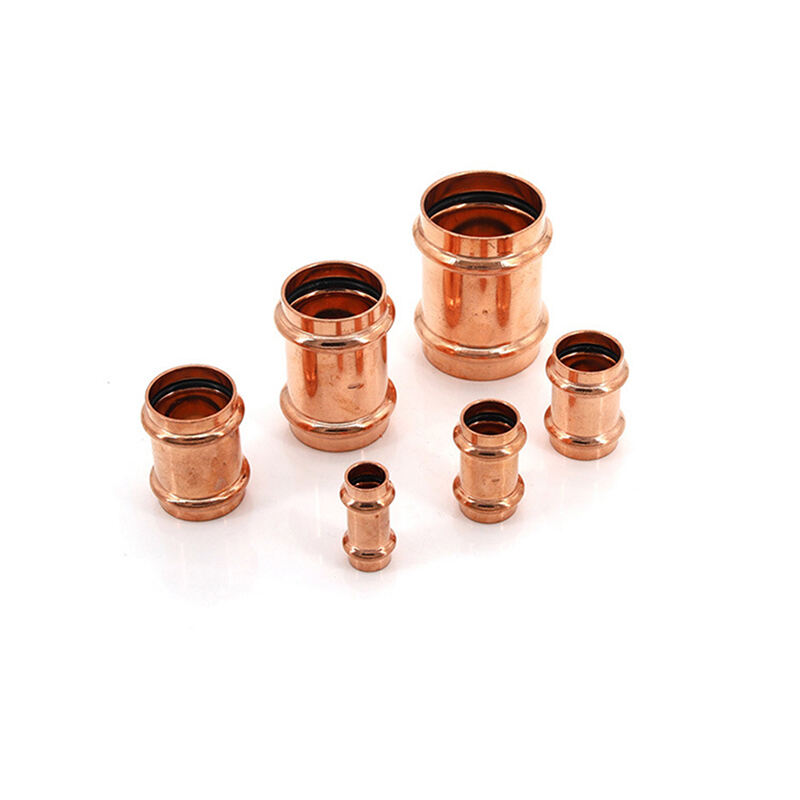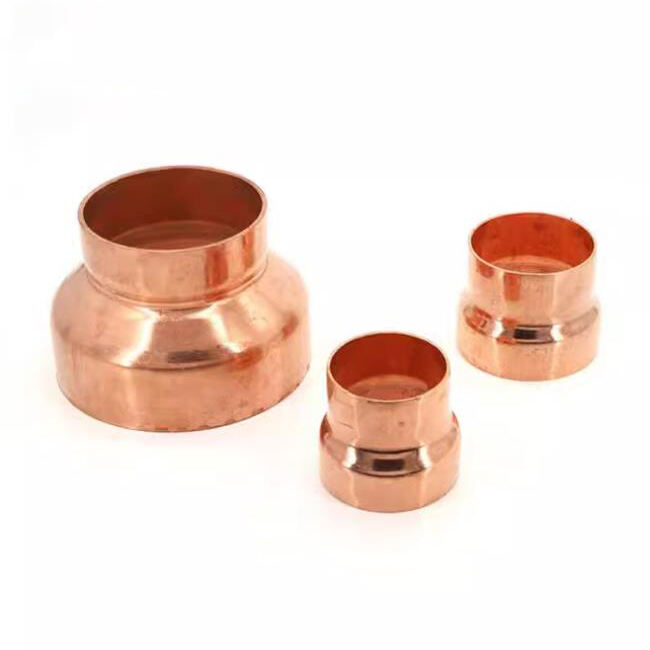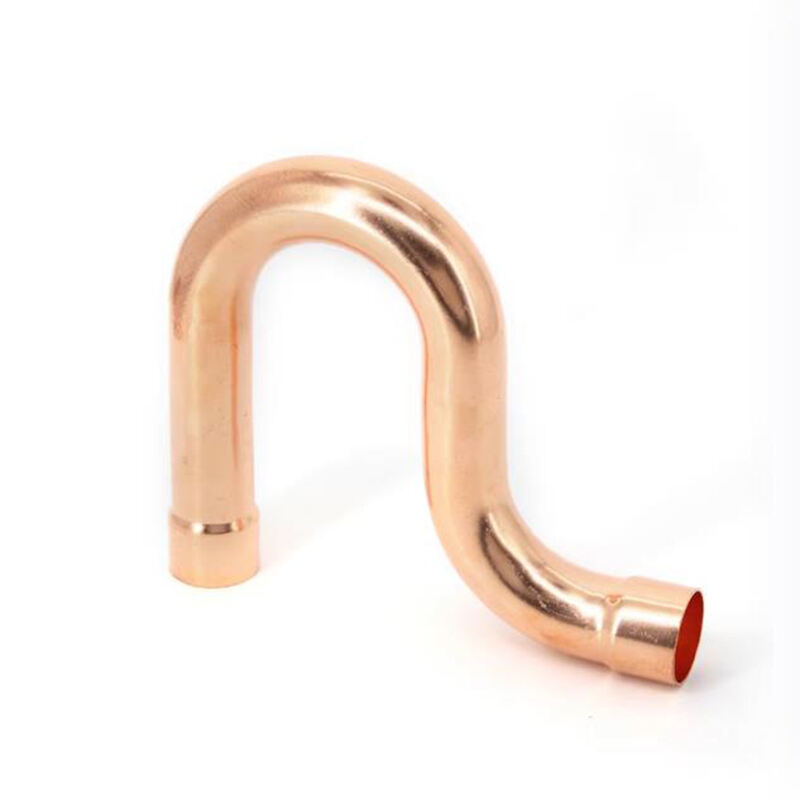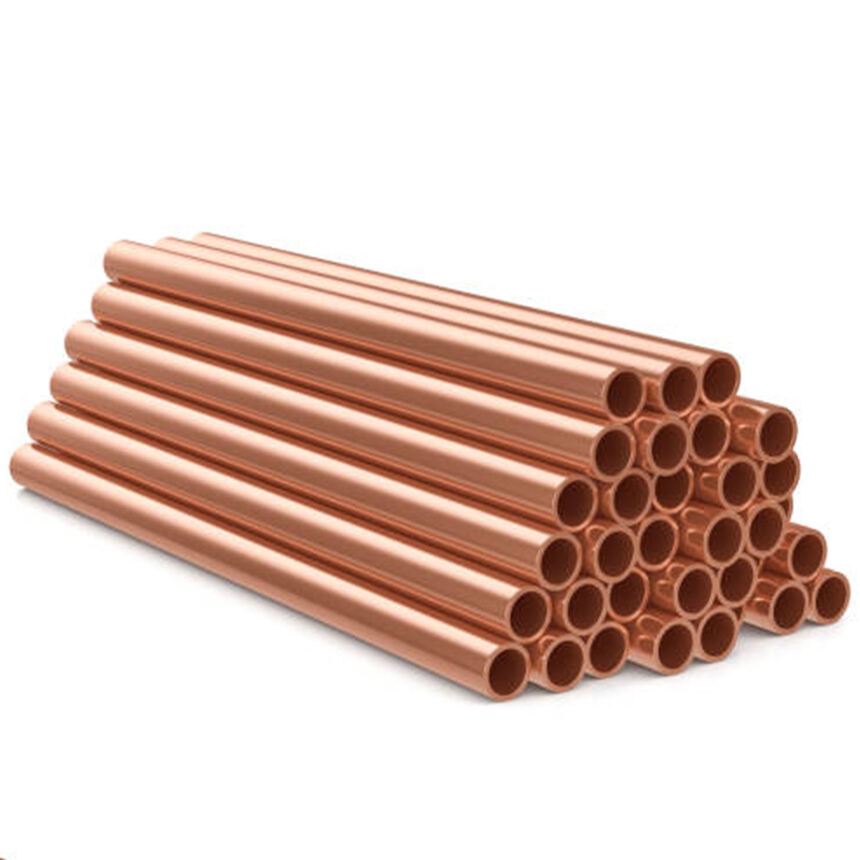Composition and Material Properties
Copper Pipes: Natural Metal Durability
Copper pipes stand out because they last so long and don't rust easily, which is why plumbers keep picking them for all sorts of jobs around the house and office. The metal handles heat pretty well too, so whether installed in a kitchen or industrial plant, these pipes tend to stick around for decades without giving trouble. What really sets copper apart though? Its ability to fight off bacteria naturally. Tests show that copper surfaces actually kill certain microbes over time, something that helps keep drinking water safer in buildings where people live and work. All these factors combined explain why copper remains one of the go-to materials when installing new plumbing systems or replacing old ones. Homeowners and building managers appreciate this track record of dependability year after year.
Plastic Pipes: Synthetic Polymer Flexibility
PVC and PEX plastic pipes bend easily around corners and through walls, which makes installation much simpler when dealing with complicated plumbing layouts. Weighing next to nothing compared to metal alternatives, these pipes are easier to carry and work with, cutting down on labor hours for plumbers working on tight deadlines. Another big plus is their ability to stand up against many harsh chemicals without breaking down, so they work well everywhere from home bathrooms to factories where corrosive substances might be present. Over years of service, this resistance means fewer replacements and repairs. The adaptability of PVC and PEX continues to make them go-to choices across different sectors of the plumbing business, especially as new building codes emerge and technology advances.
Role of Brass Fittings in Plumbing Systems
Brass fittings are really important for plumbing systems, especially when they connect to copper pipes. These fittings create strong connections because brass itself is tough and resists rusting over time. What makes them so useful is that they work well with both copper and plastic pipes too. Plumbers appreciate this since it gives them flexibility during installation projects. Because brass can handle all sorts of pipe materials, plumbers get better results when designing systems for homes or businesses. When looking at how plumbing systems hold together and move water properly, good quality brass fittings make all the difference. They help prevent leaks and keep everything running smoothly whether dealing with old copper lines or newer plastic piping throughout different parts of a building.
Cost Comparison: Initial and Long-Term Expenses
Upfront Costs of Copper vs. Plastic Pipes
Copper pipes tend to cost more at first glance than plastic alternatives. The reason? Copper simply costs more as a material, plus installers need special tools and techniques for working with metal. That's why many homeowners and contractors go for plastic when budgets are tight. Still, there's a case to be made for copper despite the higher sticker price. These pipes last decades longer than most plastics and rarely need fixing once installed properly. They stand up better to temperature changes and corrosion too, which means fewer emergency repairs down the road. So while the initial outlay hurts, copper might actually save money in the long run for those who can afford it upfront. At the end of the day, it boils down to what makes sense for each particular project's needs and wallet.
Lifespan Impact on Total Investment
How long different pipe materials last really matters when looking at overall costs over many years. Copper pipes tend to stick around for ages, sometimes hitting the 50 year mark if properly maintained. That means fewer replacement headaches and lower spending down the road. Plastic pipes tell a different story though. They might seem like a bargain upfront but their lifespan varies quite a bit based on what they're used for and how well they get looked after. Some installations see these plastic pipes needing replacement every few years, which eats into those initial savings pretty quickly. When planning out pipeline budgets, most experienced plumbers will tell anyone serious about this stuff to factor in both what something costs now and how long it actually lasts before breaking down.
Maintenance and Repair Expenses
When it comes to picking out piping materials, nobody really thinks about maintenance costs until something breaks down. Copper pipes stand out because they last so long without problems. Most plumbers will tell anyone who asks that copper doesn't leak as easily and holds up better against things like moisture and temperature changes. The bottom line is that systems with copper tend to need less fixing over time. Plastic pipes are another story entirely though. These often require patching up more regularly, especially when installed in areas where temperatures fluctuate wildly or where water pressure gets too high for what the pipe was designed to handle. Anyone looking at replacement options should factor in these repair bills when comparing copper and plastic solutions. A good look at what might go wrong down the road helps make sense of why many professionals still prefer copper despite higher upfront costs.
Durability and Performance Factors
Corrosion Resistance in Copper Pipes
Copper pipes resist corrosion pretty well, which is why so many plumbers still reach for them when installing new systems. If put in place properly, these pipes handle different types of water quality and environmental conditions without rusting away too quickly. Industry experts generally agree that good quality copper piping can stick around for 30 to 50 years before showing real signs of wear. That kind of lifespan makes copper stand out among alternatives looking for something that lasts. Sure, copper costs more upfront than plastic options, but most homeowners find they save money long term since there's no need to replace sections every few years or deal with constant leaks and fixes that cheaper materials often require.
Plastic Pipe Vulnerabilities to Temperature
Plastic pipes are great because they're cheap and easy to work with, but they do have their weaknesses when it comes to temperature extremes. When things get really cold outside, plastic tends to turn brittle, which means those little hairline cracks we all fear start showing up. And let's not forget what happens in the summer months either plastics subjected to constant heat will eventually warp over time. Knowing how different plastics handle heat is something plumbers should really pay attention to. Before making any decisions about materials, take a good look at what kind of weather patterns dominate the area where installation will happen. Also consider whether these pipes need to carry hot water regularly. Getting this part right makes all the difference between replacing pipes every few years versus having them last decades without issues.
Impact of Water Chemistry on Both Materials
The chemical makeup of water has a big effect on how long copper and plastic pipes last before needing replacement. When water is too acidic, it eats away at copper faster than normal, which means leaks start appearing sooner rather than later. Plastic pipes don't rust like metal ones do, but they still have their limits when exposed to harsh substances found in some tap water sources. Testing the water regularly makes sense if someone wants to catch problems early before they become expensive repairs down the road. The results from those tests should guide what needs fixing or adjusting in the system, whether the pipes are made of copper, plastic, or something else entirely.
Installation Processes and Connector Types
Soldering Copper Pipes with Brass Plumbing Fittings
Soldering remains one of the best ways to connect copper pipes with brass fittings, though it does take some skill and the right equipment to get right. The process basically means heating up where the pipe meets the fitting, then running solder along the seam until it melts and seeps into place by itself. When done correctly, these joints stay completely watertight, something that really matters if the plumbing system needs to last for years without issues. Getting good at soldering isn't just about avoiding leaks either. Strong soldered connections actually make the whole plumbing setup much more durable over time, which explains why plumbers still prefer this method in situations where nothing less than solid, long lasting connections will do.
Snap-Together Plastic Pipe Systems
Many plastic pipe systems come with snap together joints that make installation fast and simple, cutting down on what plumbers charge for labor. The design makes these pipes really good for people doing their own work around the house since no special wrenches or complicated techniques are needed. When things go together easily, it means less time spent putting them in place and fewer mistakes happening along the way, which leads to better connections throughout the whole plumbing system. Homeowners love this setup for fixing leaks under sinks or setting up new water lines in garages because nobody wants to spend hours fighting with stubborn fittings when there's a quicker alternative available.
Copper Pipe Connectors vs Plastic Adhesive Methods
Knowing how copper pipe connectors differ from plastic adhesives makes all the difference when considering how easy something installs and how well it holds up over years. Copper fittings typically rely on mechanical connections that stand up pretty well against knocks around and weather shifts. Plastic glue joints tell another story though they need careful handling during application otherwise those connections might fail down the road after repeated expansions contractions. Each approach brings strengths to table depending what kind of job faces ahead whether dealing with high pressure lines or just simple residential setups where conditions vary day to day.
Environmental and Safety Considerations
Recyclability of Copper vs Plastic Materials
Copper stands out because it can be recycled again and again without losing value. Most recycling centers will take back copper wire and tubing, which cuts down on what people pay upfront when they want to recycle old pipes or electrical components. What makes copper so special is that after being melted down dozens of times, it still works just as well as new material. Plastic is different though. Even though we say plastic can be recycled, the reality isn't so great. When plastics get processed, their quality drops each time. That means recycled plastic ends up making cheaper products that don't last as long. For plumbers and builders looking at sustainability, switching from plastic pipes to copper fittings actually saves money in the long run while reducing waste buildup in landfills.
Fire Safety and Thermal Resistance
Copper pipes stand out when it comes to resisting fires, which is why they're often selected for places where temperatures get really high. Plastic just melts away when exposed to heat, but copper won't catch fire at all thanks to how hot it needs to be before melting down. The fact that copper doesn't burn makes a big difference for overall fire safety. Most local building rules actually require copper piping in certain situations because of this property. We see this requirement showing up regularly in both homes and businesses across the country. Fire marshals tend to push for copper installations especially in kitchens, near furnaces, or anywhere else where sparks might fly around. So if someone wants their plumbing system to meet strict safety requirements while also protecting against potential damage from extreme heat, going with copper makes perfect sense from both an engineering standpoint and common sense perspective.
Microplastic Leaching Concerns in Plastic Pipes
New research shows growing worries about microplastics leaking out of plastic pipes into our water supply. These tiny plastic bits might not be visible to us, but they're getting into tap water as plastic breaks down over time. The health effects remain uncertain, though scientists are definitely concerned enough to investigate further. When looking at plumbing options, awareness of this issue matters a lot for anyone wanting cleaner water sources. Copper piping has become increasingly popular among plumbers and homeowners because it doesn't release plastics during normal operation. While copper isn't without costs or limitations compared to plastic alternatives, many find the tradeoff worth it just to avoid those pesky microplastics ending up in their drinking water.









